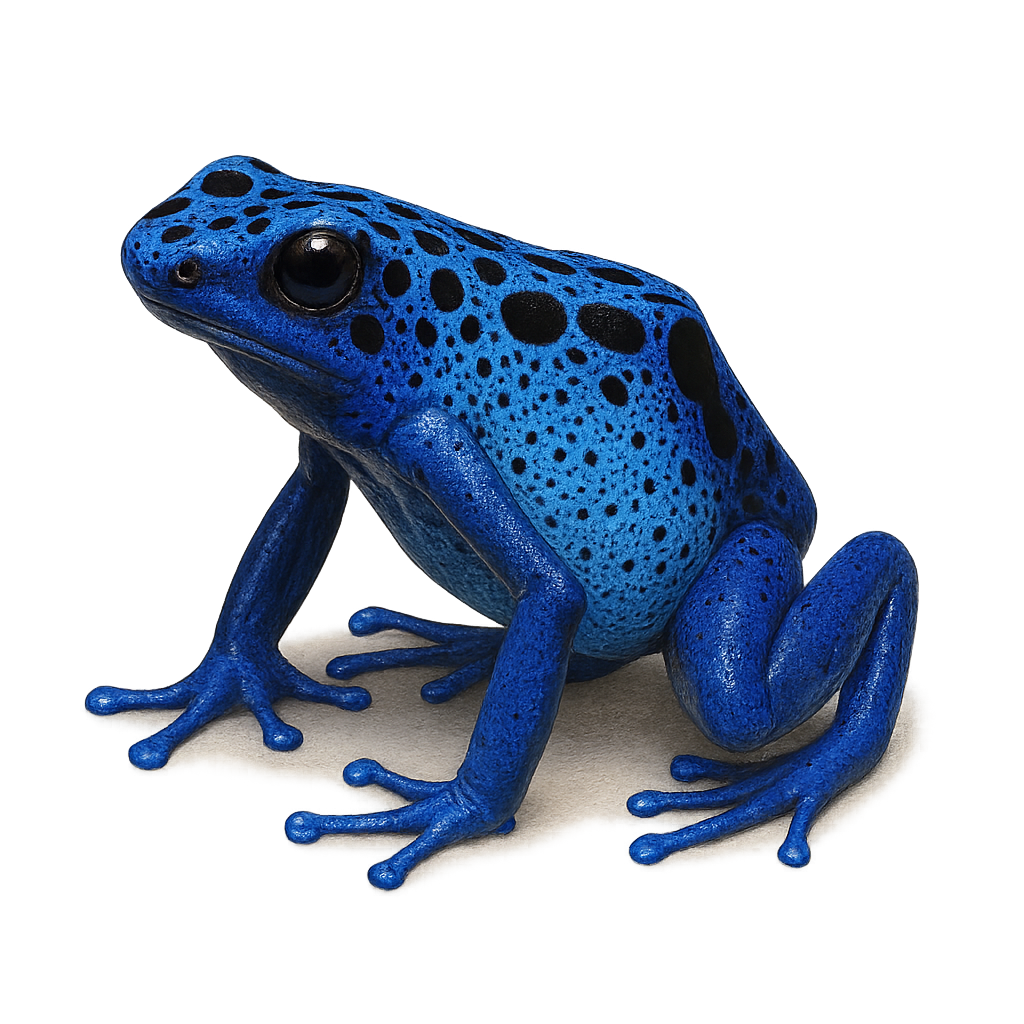Your wildlife photography guide.
Explore the blue poison dart frog in detail, study its behavior, prepare your shots.
Where to observe and photograph the blue poison dart frog in the wild
Learn where and when to spot the blue poison dart frog in the wild, how to identify the species based on distinctive features, and what natural environments it inhabits. The WildlifePhotographer app offers tailored photography tips that reflect the blue poison dart frog’s behavior, helping you capture better wildlife images. Explore the full species profile for key information including description, habitat, active periods, and approach techniques.
Blue Poison Dart Frog
Scientific name: Dendrobates azureus

IUCN Status: Least Concern
Family: DENDROBATIDAE
Group: Amphibians
Sensitivity to human approach: Suspicious
Minimum approach distance: 2 m
Reproduction period: March to April
Incubation: 14 jours
Births: March to April
Habitat:
tropical forests, wetlands, streams
Activity period :
Primarily active during the day, with peak activity in the morning and late afternoon.
Identification and description:
The Blue Poison Dart Frog, scientifically known as Dendrobates azureus, is a small, brightly colored frog native to the rainforests of Suriname. Its vivid blue skin is dotted with black spots, making it easily recognizable. This bright coloration serves as a warning to potential predators, as it secretes potent toxins through its skin. Measuring about 3 to 4 cm in length, this species is diurnal and spends most of its time hunting small insects. It is often found in humid areas, near streams and ponds. Although its natural habitat is limited, it is popular in the pet trade, leading to conservation efforts to protect its wild populations.
Recommended lens:
Macro – adjust based on distance, desired framing (portrait or habitat), and approach conditions.
Photography tips:
To photograph the Blue Poison Dart Frog, it is advisable to use a macro lens to capture the details of its colorful skin. Approach slowly to avoid startling it, maintaining a distance of about 2 meters. Natural light is ideal for highlighting the shades of blue, so aim for shots in the middle of the day. If possible, use a tripod to stabilize your camera and achieve sharp images. Be patient and wait for the frog to move naturally to capture interesting poses.
From knowledge to field practice
A species profile helps you understand an animal. In the field, the challenge is often different. Remembering your own observations.
The WildlifePhotographer app allows you to:
• record your personal observations
• note locations, dates, and behaviors
• revisit your field references over time
• build a private and long-term field logbook
The app does not provide observation locations.
It helps you organize what you actually observe, with respect for wildlife.

